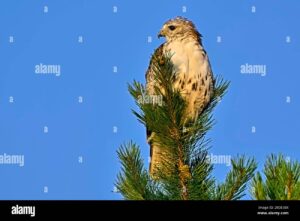30 MCQs on “The Thought-Fox” and “Hawk Roosting” by Ted Hughes
Given below are 30 MCQs on “The Thought-Fox” and “Hawk Roosting” by Ted Hughes. We will be focusing on concept-based understanding:
-
In “The Thought-Fox,” what does the fox represent? A) An actual fox B) Imagination and creativity C) Fear and danger D) None of the above
Answer: B) Imagination and creativity
-
What is the central theme of “Hawk Roosting”? A) Human superiority over nature B) The majesty of the hawk C) The idea of power and control D) The fragility of life
Answer: C) The idea of power and control

-
Which poetic device is most prominent in “The Thought-Fox”?
A) Metaphor B) Simile C) Personification D) Alliteration
Answer: C) Personification
-
What does the hawk in “Hawk Roosting” consider itself?
A) A ruler of the world B) A servant of nature
C) A humble creature D) A prey to other animals
Answer: A) A ruler of the world
-
What is the significance of the “five acts” mentioned in “The Thought-Fox”?
A) They represent the stages of creativity B) They symbolize the passage of time
C) They are a reference to Shakespearean plays D) They illustrate the fox’s hunting technique
Answer: A) They represent the stages of creativity
-
Which of the following phrases from “Hawk Roosting” reflects the hawk’s arrogance?
A) “Now I hold Creation in my foot” B) “The earth’s face upward for my inspection”
C) “I kill where I please because it is all mine” D) “I sit at the top of the wood”
Answer: C) “I kill where I please because it is all mine”
-
How does Ted Hughes portray the fox in “The Thought-Fox”?
A) As a cunning predator B) As a vulnerable creature
C) As a mysterious and elusive presence D) As a symbol of destruction
Answer: C) As a mysterious and elusive presence
-
Which of the following best describes the tone of “Hawk Roosting”?
A) Reverent B) Humorous C) Arrogant D) Melancholic
Answer: C) Arrogant
-
What does the hawk in “Hawk Roosting” believe about its existence?
A) It is subject to the laws of nature. B) It is a transient being.
C) It is the center of the universe. D) It is insignificant in the grand scheme of things
Answer: C) It is the center of the universe
-
What is the symbolic significance of the “twig-smashed ice” in “The Thought-Fox”? A) It represents the destruction caused by the fox. B) It symbolizes the fox’s journey through the forest. C) It signifies the emergence of the poet’s creativity D) It reflects the harshness of winter
Answer: C) It signifies the emergence of the poet’s creativity

